After the publication of my article The 5TRM Back Squat Program, I received many comments and emails with questions about the real necessity for an athlete to test his 1RM. Many argue there’s no need to attempt a 1RM in order to determine your maximal strength or if it has improved after a program. And you know what? They are right!
Unless you are a competitive weightlifter or powerlifter, you can assess your maximal strength and/or the effectiveness of a strength program without testing your 1RM. That said, even professional weightlifters and powerlifters are very cautious when it comes to testing their 1RM. In fact, most of them test their 1RM and try for a new PR (personal record) only in competition. And not even at any competition, but only at the most important one(s) of the year. That’s right: a professional lifter usually tests his 1RM and/or attempts a PR only once or twice a year.
There are also some cases in which it is impossible to determine a real 1RM due to the large jumps between the sizes of a training tool—the kettlebell, for example. A girevik may be able to press a kettlebell for multiple reps, but not be able to complete even one rep with the closest heavier bell. In this case, the athlete must presume how far he is from being able to press the heavier bell according to the number of reps performed with the lighter one.
So let’s take a moment to examine two facets of this discussion:
- How you can determine your 1RM based on your training with a lighter weight.
- What a “1RM” really is, as well as when and how is best to test it.
Determining Your 1RM Based on Your 2RM, 3RM, or 5RM
If your goal is to improve your maximal strength but you are not a competitive lifter, why should you test your 1RM? Once you know your 2RM, 3RM, or 5RM, you can predict your 1RM with decent accuracy:
- Your 5RM is roughly equivalent to 85-87.5% of your 1RM
- Your 3RM to 87.5-90%
- Your 2RM to 90-92.5%
Easy! There are plenty of other formulas out there that predict your 1RM according to a certain RM, though I have to say I’m not too fond of most of them. And the higher the RM that you are using, the less accurate your predictions will be. For instance, if you base your calculations on your 10RM, which should roughly correspond to 70-75% of 1RM, you can’t be sure that your 1RM prediction will turn out to be real. The margin of error increases as the reps increase.
There are some constraints to this method, though. As soon as you have assessed that your 2RM, 3RM, or 5RM has improved, you can comfortably say your hypothetical 1RM has also improved. Again, this reasoning works pretty well as long as the RM you have tested isn’t too high. Let’s say you were able to perform 3RM with a certain weight on a certain lift, and after an eight-week program you are now able to perform 5RM with the same weight. Your 1RM has, of course, improved. But, let’s say your RM with a certain weight on a certain lift has improved from 15 to 20 reps. Are you sure your 1RM has also improved? No. You are sure you have improved your strength-endurance, but your 1RM could have stayed the same.
The fact is you don’t know. The relationship between 1RM and a high RM is not reciprocal. If you improve your 1RM, then you can be confident your 15RM has also improved, but you cannot be confident in the opposite relationship. This is another good reason to be Strong…First! I personally wouldn’t rely too much on an RM higher than 5-6 to predict my 1RM, or to assess if my 1RM has improved.
What If You Still Want to Test Your 1RM?
Per all of the above, unless you are a competitive lifter, you don’t really need to test your 1RM. But here’s the fact: most likely, sooner or later, you will want to test it. If you are a strength athlete, one day you will feel the strong desire to test your real maximal strength, as much as a person passionate for conditioning will feel the desire to perform an all-out snatch test and an endurance athlete will want to run a 10K in the shortest time possible. In addition, many of the most effective strength programs are based on the 1RM, so if you want to begin one of them, you will need to test yourself.
But as much as going all-out all the time is counterproductive for strength-endurance and endurance athletes, testing your 1RM too often is counterproductive for you, as well. In the best of cases, your strength will decrease. In the worst, you will get injured.
Do not allow your ego to drive your actions. A 1RM test must be planned in advance and you need a well-designed program that leads you gradually to the test. There are many safe and effective programs that can lead you there. Some of them are based on the Western methodology, others on the former Soviet Union’s methodology. Needless to say, I am fond of these latter, about which you can learn so much by attending one of Pavel’s Plan Strong seminars.
One thing these methodologies have in common is that they both lead you to your test day through a more-or-less gradual reduction of the training volume (NL or “number of lifts”) in the weeks prior to the test. This allows you to face the test in the best possible physical and psychological conditions.

My Classifications: PR, 1RM, 1TRM
Let’s now go a little deeper into the concept of the 1RM. There is actually more than one way to look at a “1RM” and I’m going to share my definitions with you. My personal classifications include the PR, the 1RM, and the 1TRM. They all refer to the weight that you can lift for one rep with maximal effort—but in different conditions. These classifications also provide some clues as to how often they should be tested:
- PR refers to the weight you lifted once in your life, and you don’t know when or if you’ll be able to lift it again. Probably your form wasn’t perfect, but the lift was legal (meaning, in a powerlifting meet you would have received at least two white lights out of three). It was a very special day, you felt incredibly strong physically, and you were psychologically ready to conquer the world. You did the lift once, but you don’t own it.
- 1RM refers to the weight you lifted after following to the letter a strength cycle in all of its phases. You planned ahead and it took several weeks of consistent training to prepare you for that lift. On the day you attempted this lift, you were in perfect physical and psychological condition, and you were psyched up before attempting it. The lift was legal and the form was good. Again, you did it, but still you can’t say you own it.
- 1TRM refers to the “technical” one-rep max, which is the heaviest weight you can lift for a single rep with perfect form, without having followed a strength cycle for several weeks, and without the need to psych up for it. Basically, it’s the weight you can lift on any good day at the gym after a few “preparation” lifts with lighter weights. You own it. It usually settles around 95-97.5% of your 1RM.
It goes without saying that attempting your PR is something you shouldn’t do more than once or twice a year or, if you are a competitive lifter, only during a main competition. And when you do attempt your PR, you must be in extremely favorable physical and psychological condition.
You should only test your 1RM after having followed a specifically designed strength program, and these programs usually last eight to twelve weeks. And since not all strength cycles include a final 1RM test, my personal suggestion it that you test your 1RM no more than two or three times a year. And again, on the testing day you must be in optimal physical and psychological condition.
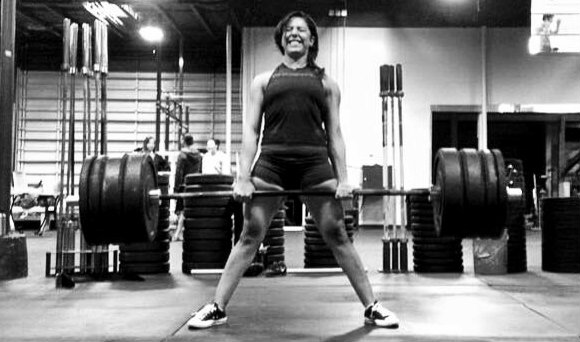
What you can test more often is your 1TRM. On a training day in which you feel particularly strong, you can challenge yourself with a couple of heavy singles, and sometimes try to go even heavier, up to a 1TRM. When you do, never overestimate your strength, always use good judgment, and always be very cautious—injuries are always around the corner.
I personally wouldn’t push myself to a 1TRM more than once every month or two. Keep in mind that you want to avoid failing at a lift. Every time you fail, you take several steps back in your journey toward strength. We improve in what we practice, so if you practice success, you improve your capability at succeeding. If you practice failure, you improve your capability at failing. It’s as simple as that.
For the Best Results: Work Off Your 1TRM, Not Your 1RM
Finally, when you undertake a strength program based on percentages of your 1RM, never calculate your training weights according to your PR. Since you don’t own your PR, you could end up overestimating your training weights. You can, of course, base your calculations on your 1RM, but I personally believe it is often much wiser to base them on your 1TRM—and I have experimented with this on myself.
Trust me, the difference in terms of the weight that you will load on the bar in a regular training day is minimal, but it can make a huge difference in terms of safety and results. Let’s say your 1RM in the back squat is 200kg and your 1TRM is 195kg (95%1RM). This means that 75%1RM is 150kg and 75%1TRM is 142.5kg. 7.5kg may seem like such a small difference between the two training weights, but the difference is enough to ensure that you will always perform all of your reps with perfect form and that you will avoid failure. Maybe your ego won’t be as happy at the beginning of the program, but it will be at the end of it when the time will come to test your new 1RM.
In the next article of this series, I will offer a more advanced variation of the The 5TRM Back Squat Program, this time based on your 1TRM and with a volume progression that recalls that of the Plan Strong methodology.
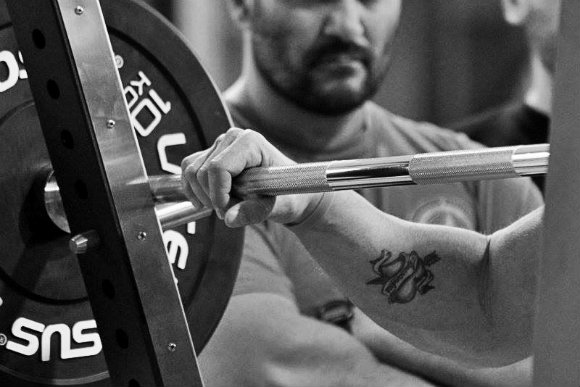
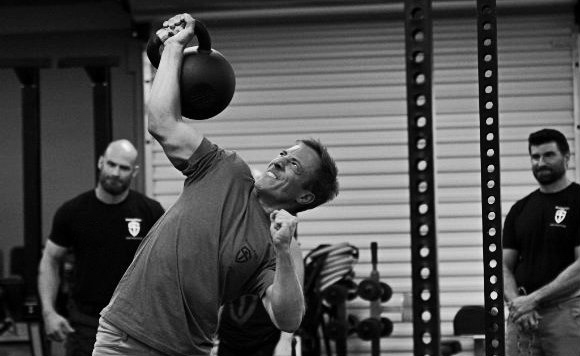
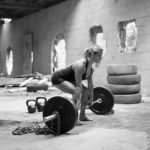
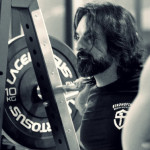
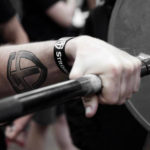
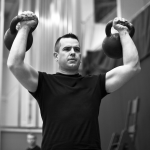


Thanks for this Fabio,
In every field I’ve worked in I’ve seen making definitions more precise lead to sudden and rapid progress. It clears out the mental fuzz and usually has impact far from the original distinction. These thoughts are new to me and already impacting.
Thanks for the article, I would like to get your opinion on the following…
The West-side barbell system / methodology, which has it roots in the same Soviet science pool as StrongFirst calls for doing a PR once a week (on most weeks, by most practitioners) , and since I practice according to it for almost 2 and a half years with good results I thought at the beginning of the article “Ha !?!?!?!?”. After reading your RM definitions I felt more comfortable with your statements as the Max-Effort session calls for 1TRM, ant not really an actual PR. Than I thought “one every month or two?” still, I (and some of the strongest people on the planet) do it weekly… but Ahh! we rotate lift pretty much every week, so basically I test a 1TRM of any lift usually 4 – 8 weeks apart, some times more…
So… did I a settled the imaginary argument in my mind properly or did I made some logical errors?
This site / community is a great source for knowledge, I started incorporating the ideas from here to my own training and to my teaching. Looking forward for you to give a SFB certification in Israel…
Great Informations!! Thanks Fabio!
Another method I believe is westside, which has people maxing out every week, but on a different exercise?? Your thoughts?
Fabio, thank you for the excellent article, and thank you and everyone else who writes for StrongFirst for all the time and effort you put into writing these articles. We, the readers, often forget just how much work goes into writing an article that is easy to read and understand. I noticed a small error in your calculation: 75% of 195 kg is 146.25 kg, not 142.5 kg. It doesn’t affect the point you were making, and I’m a little embarrassed for pointing it out, but at least you know I’m reading your work carefully.
Autoregulate the weights every day, work up to a weight that’s RPE 8(at least two reps in the tank), for example, and do sets with that(you can autoregulate the number of sets too, but don’t use it to quit too early). That way you don’t have to waste your training time working up to PRs, RMs or TRMs, and in TRMs case, wonder whether it is a good enough of a day to test 1TRM.
Great Article. Can you explain what exactly is the form difference between a 1RM and 1TRM? From the information above I am guessing there is no difference in technique, only in the level pf Psyching up and the programme followed before attempting any of those two.
Great article. Valuable message!!!
Gem of an article. Superb information. I have learned a lot. Thank you Fabio.
Great article Fabio.
When StrongFirst talks about strength goals and the point of diminishing returns, such as a 2.5x BW deadlift, a 2xBW back squat, 1.5xBW bench press and a 1xbw military press, are these goals a 1TRM or 1RM?
Excellent article and the truly “intelligent” approach to the 1 RM. Love this one!
Cheers Fabio!
Outstanding.
Excellent article, Fabio, thank you.
Great article! Thank you! The key is that any type of 1RM must be, as you say, planned! Never on a whim. Too much risk for injury. I knew this when I was younger … but of course, did not pay attention! There are consequences….
Good Article
Awesome article Fabio! Top advice ☝☝